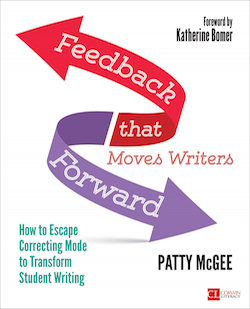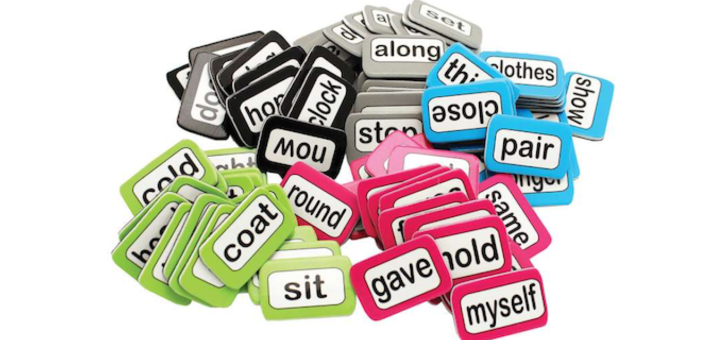Think “Makerspace!” for Your Grammar Studies
Grammar.
What does this word bring up for you? Do you feel a sense of dread or an urge to diagram a sentence or two?
Are you one of those who corrects others’ grammar in your mind as they speak — or do you avoid teaching grammar altogether?
Wherever you fall on the love-hate continuum of grammar, we can all probably find common ground in at least one belief:
Writing is more powerful with strong,
intentional use of grammar.
How does this belief inform your grammar instruction? For me it helps me think of grammar as a set of tools a writer chooses to shape their writing. Like a carpenter reaches for a chisel to carve wood, or a painter chooses certain brushes or colors, a writer uses grammar to construct, shade, and contour their writing.
Grammar and writing are not separate from each other. They are part of the same act of composing. And so… It’s not grammar and style — grammar is style.
Take a look at some stunners of grammar usage:
There is nothing noble in being superior to your fellow man; true nobility is being superior to your former self. ~ Ernest Hemingway
Injustice, large and small, was like sour, moldy bread. Consumed often enough, it brought on hunger for the meat of revenge. ~ BV Lawson, Mystery Writer
Being a mother enhanced my knowledge, my ability to multitask and empowered me to weather the attacks that come with serving the public. ~ Ruth Nemzoff, NYT OpEd
I hate all this attention. I just want to hide away in a enchanted forest or something so no one can ever reach me and comfort me. And from my mom’s crooked smile I know that she wishes the same. ~ 6th Grade Fiction Writer
These examples illustrate how writers of all ages and text types have approached grammar in the mode of “writer-as-craftsperson” — with a set of tools. Studying grammar can change the way we teach grammar so that students see it as a creative force rather than a correcting one. Here are a few ideas to consider, using a grammar study or ‘workshopping’ approach.
Set the Scene for Study
First, we may change how we fundamentally approach grammar instruction by experiencing grammar through a study. When we study something, we often get curious, look closely, ask questions, hypothesize, jot, mimic, create, play, discover, and draw conclusions. Grammar study builds in all of these opportunities (and more!). When shifting into a grammar study approach here are a few tips to get started:
- Consider the time you have for grammar study without sacrificing writing time. Know that it is better for students to regularly study grammar in smaller snippets of time (10 minutes) rather than a long block of time every once in a while. Preserve this time in your schedule.
- Reserve notebook space where students can jot about, try out, and explore what they are studying in grammar. Consider this a makerspace for grammar.
- Create goals around grammar learning. These goals can be more about grammar study (Writers use their notebook to try out different grammar techniques) or about grammatical skills (Writers create compound and complex sentences).
Study Grammar
During grammar study time, the sky’s the limit with the study-like experiences you can make available to your students. Here are a few ideas:
- Mentor Sentences: Just like using a mentor text in writing instruction, we can zoom in on a sentence and try to mimic, and eventually own, the structure of that sentence. This includes how and when to use that type of sentence in their writing.
- Sentence Search: Share a sentence type such as a compound sentence. Explain what makes it a compound sentence. Ask partners to search for other sentences that are also compound sentences in a text. Jot them down and name out what makes them fit that criteria of a compound sentence. Ferret out sentences that are not compound sentences and jot about why they are not. Talk lots about it with the partners they are working with.
- Sentence Construction: Create a baggie of words of all parts of speech, endings, and punctuation. Ask students to create sentences and challenge them to try out different sentence types, punctuation, and length. Include time to jot down what they are learning in their notebooks along with sentence examples.
Transfer to Writing
- Use Writing: Bring together the grammar study notebook and the writing the student is working on during revision and/or editing. Ask students to try what they have been studying in grammar in their writing.
- Model: Show grammar techniques to your students in a step by step way so they can replicate that in their writing. This may sound like:
- First, find two short sentences next to each other.
- Combine these sentences into one with a connecting word (and, yet, but, so).
- Think, “Does this sound better or should I keep them separate?” (You might also reverse the process by having students look at compound sentences and think, “Would this have more impact if it was made into two sentences, maybe of varying length?”
- Student Share: Set up students in partnerships. Ask them to share with their partner how they used what they learned in grammar in their writing. Partners jot down what they learned.
In the long run, studying grammar with a “makerspace mindset” can create an entirely new dynamic: grammar is viewed as an instrument of craft and invention – a tool to add clarity, meaning, style, voice, originality, and purpose to writing.
Writers, the world over, want this — need this.
(Want more, but about word study? Watch for Word Study that Sticks: Best Practices, K-6 by Pamela Koutrakos, due out in November.)
___________________________________

Image credit: K-12 School Supplies




































